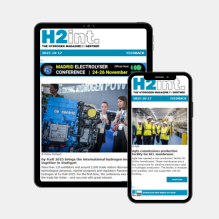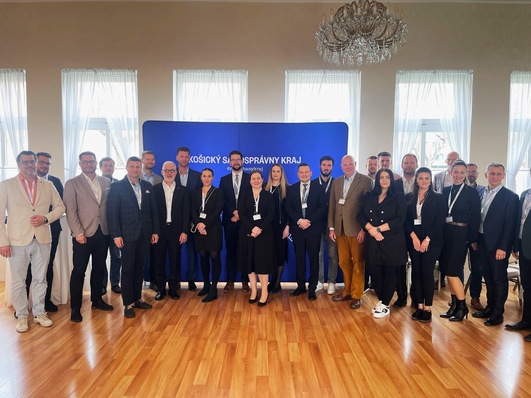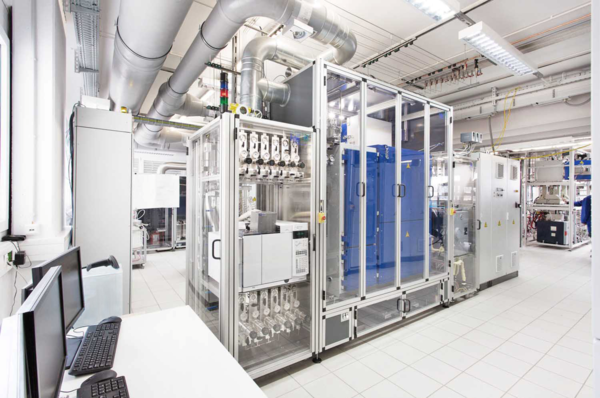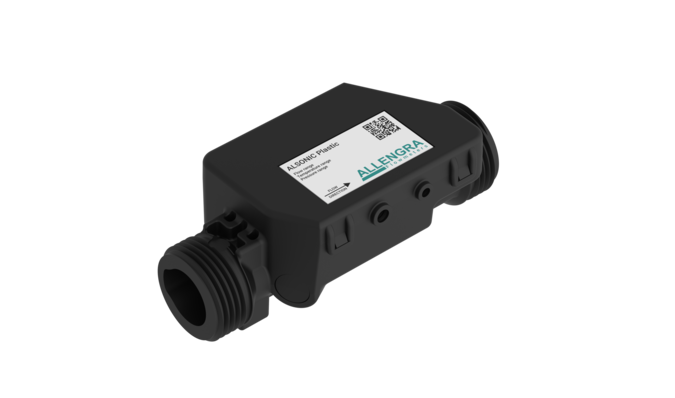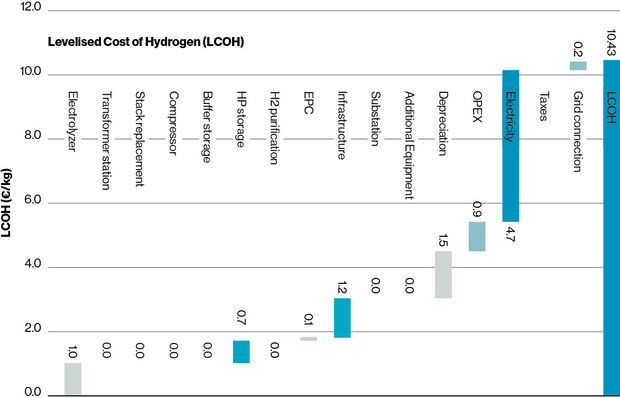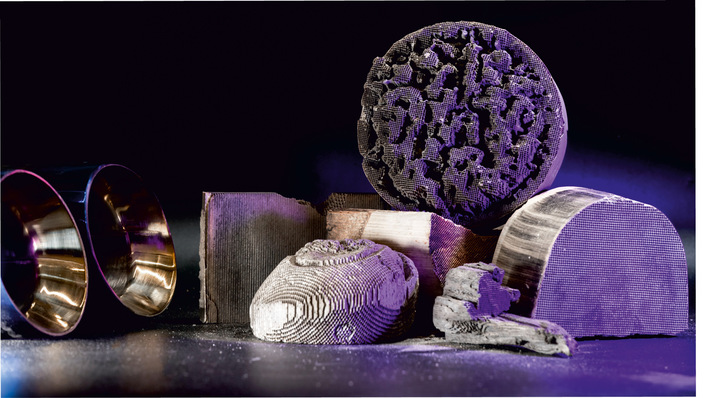Reticular materials are crystalline structures made of metal ions connected by organic molecules. They form a porous network with an extremely large surface area. Hydrogen gas can be stored within this network at high density through adsorption. When such materials come into contact with hydrogen at moderate pressure, they trap hydrogen molecules in their microscopically small pores.
This adsorption process typically takes place at around 30 bar and at temperatures close to room temperature. To release the hydrogen stored in this way, it is sufficient to reduce the pressure or slightly increase the temperature. This allows for precise control of the hydrogen supply, for example in a fuel cell, with minimal energy input.
Innovative hydrogen storage system
Based on reticular materials, our start-up H2MOF has developed a novel solid-state hydrogen storage architecture. The company, based in Irvine, California, was founded in 2021 by Sir Fraser Stoddart, the Nobel Prize winner who passed away in 2024, and Omar Yaghi, professor of chemistry at the University of Berkeley and founder of reticular chemistry. In 2025, he received the Nobel Prize in Chemistry for his research. H2MOF’s innovation is based on a new class of reticular materials. These overcome the limitations of conventional hydrogen storage methods and thus enable the transition from pilot trials to real-world, scalable applications.
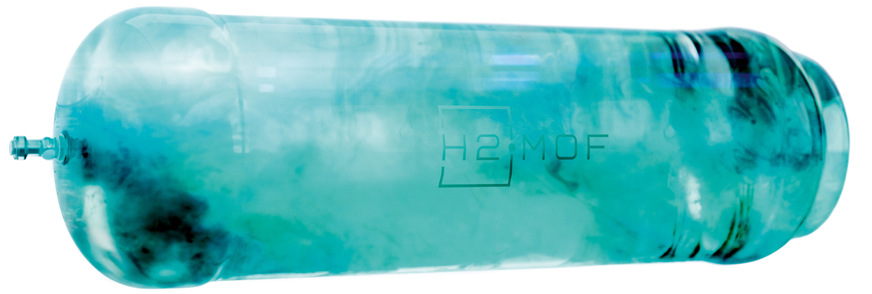
© H2MOF
Drones and e-bikes for field testing
In the near future, we are focusing on drones and light mobility. However, this is only the beginning. If successful, a wide range of potential applications opens up: compact low-pressure and high-performance storage systems on the ground, large-scale gas transport, and use in the mobility sector, such as in heavy-duty road transport, rail, aviation, and maritime applications.
With a gravimetric capacity of over 5.5 weight percent and a volumetric density of over 40 g/l, these materials outperform many conventional high-pressure systems. They offer up to 30 percent improved weight efficiency and nearly twice the power density. As a result, drones, e-bikes, or e-scooters can carry more hydrogen in smaller, lighter tanks, increasing their range and payload capacity without compromising performance.
In addition to storage efficiency, systems that store hydrogen in solid form offer key advantages in terms of safety, thermal integration, and operational reliability. Moreover, there are no boil-off losses, making them ideal for vehicles that remain idle for extended periods.
The reticular materials are developed on the nanoscale. The selection of chemical building blocks – typically metal ions connected by organic molecules – is made in such a way that they form a highly porous framework compound with precisely defined geometry. The basic principle is: the more cavities, the more opportunities to “park” hydrogen molecules inside.
Artificial intelligence accelerates processes
However, the pores must not only be sufficiently large, but also accessible and evenly distributed – even the smallest changes on the nanoscale can drastically affect storage capacity. In addition, the material must be designed to attract hydrogen selectively without binding it too strongly, so that it can be absorbed and released reversibly.
Artificial intelligence (AI) and machine learning (ML) play a central role in this development process. Unlike in the past, not every arrangement of the individual components of the reticular material has to be synthesized and tested for its properties. Instead, AI software specifically programmed for this purpose analyzes large datasets and preselects structures with high potential. What used to take years of trial and error can now be reduced to just a few weeks.
The batteries commonly used in drones, e-bikes, or e-scooters to date are generally heavy, slow to charge, and have limited range. Hydrogen, if stored efficiently, can provide a solution. In drones, H2MOF’s hydrogen storage system enables an almost tenfold increase in range and, depending on the application, in flight time. Payload capacity also improves significantly.
Hydrogen-powered e-bikes or scooters with solid-state storage can be refueled in just a few minutes and enable a new class of ultra-light bicycles with long range. These are suitable, for example, for urban delivery services, commuters, or use in corporate fleets.
The development of our reticular materials is already at an advanced stage. We are currently designing and validating the first prototypes. After corresponding in-house tests, we are ready to test our technology in the field. To this end, we are working with industry partners in the drone and e-bike sectors. We plan to conduct the first field trials with drones later this year.
In my view, storing hydrogen in reticular materials represents a groundbreaking improvement for fuel cell technology as well, because it enables compact, safe, and efficient hydrogen storage at low pressure and ambient temperatures.

© H2MOF
Hydrogen storage still challenging
In the past, the promise of hydrogen as an emission-free energy carrier was limited by the complexity and inefficiency of its storage. High-pressure tanks, cryogenic systems, and metal hydrides each present different challenges in terms of weight, safety, cost, legal, and infrastructure requirements. These are among the reasons that have so far hindered the widespread use of hydrogen, especially in applications requiring mobility, modularity, and rapid deployment.
By overcoming these fundamental obstacles, H2MOF’s technology, in my opinion, opens the door to the broad integration of hydrogen in areas that were previously considered impractical. It makes the mobile, decentralized use of hydrogen economically attractive.
While initial applications of hydrogen-powered drones and light mobility offer immediate and tangible benefits, the true significance of this breakthrough lies in its potential to reshape the way hydrogen is stored, transported, and used across the entire energy landscape.




